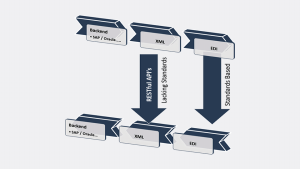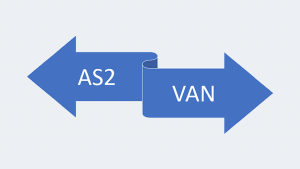EDI Standards

EDI has ruled over the B2B integration space. Acting as a de facto standard for transactions between businesses..
For decades, logistics companies have used EDI (Electronic Data Interchange) 204, 214 and 210 standards to speed up manual processes. However, forward-thinking companies are now recognizing there’s a newer technology with enhanced benefits.
However, the EDI “Standards” continue to cause frustration due to the lack thereof. Leading to a Partner onboarding nightmare. Further frustration is experienced with the “unfriendly” VAN segment.
But times change, and technology is changing with it. EDI has technical shortfalls and limitations that limit productivity and efficiency, resulting in higher overall costs for providers and shippers. That’s why more companies are turning to application program interfaces (API) to exchange data digitally. In a recent survey, 55% of supply chain executives said they’re currently considering APIs as an alternative to EDIs.
“It’s a little outdated, and you can get things done a lot faster without [EDI], and it’s the same data — just put in a different structure…”
The Future Now is API
By adopting an API-enabled TMS, 3PLs and brokers can spend less time on administrative tasks and more time on revenue-generating activities. The result? Faster communications between multiple systems and parties, improved efficiency, end-to-end visibility and flexibility, reduction in manual processes (quoting, booking and tracking) and overall profitability. Here are three major advantages of using APIs versus traditional EDI-enabled systems.
Faster Exchange of Information – With APIs, information is available in real time through synchronous integrations, allowing providers to get the most up-to-date rates from carriers, track status and electronic pick up requests, and POD image instantly.
Greater Visibility & Flexibility – APIs use universal transmission methods, relying on common digital building blocks to help providers connect to virtually any system. By using APIs, both shippers and Logistics Service Providers (LSPs) can service clients and partners more easily.
Less Development Customization & Costs – APIs can connect data from multiple systems and parties and automate processes with minimal customized segments. These segments are also usually reusable for other systems or similar processes, because it’s built on universal standards.
Bridging the use of API into EDI

In the absence of alternative “standards” the use of EDI is still growing, at a rate of about 7% /Yr.
Bridging the use of API into EDI can get it done without this translation but lacks “standards”.


